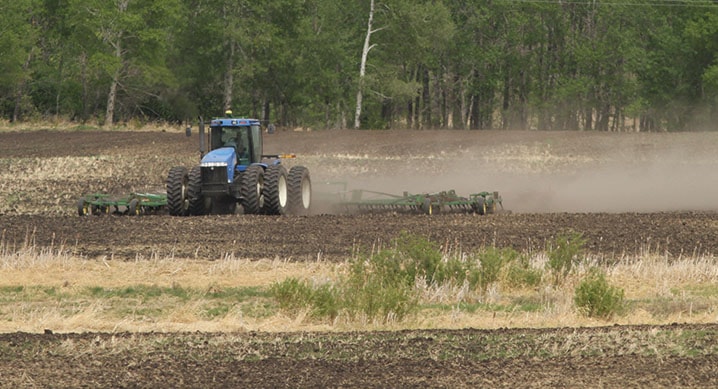More peas please!
Farmers seem to have been listening to that request as more are seeding the major specialty crop this spring, Harry Brook, crop specialist with the Alberta Ag-Info Centre in Stettler, said Tuesday.
But rather than a sign that fussy children are suddenly liking their greens, the reason is simple — last year’s pea crop garnered very good prices, he said.
Over the winter, yellow peas were in the $12 per bushel range, and at 40 to 60 bushels an acre, “It was paying a heck of a lot better than canola,” he said. “It’s a stimulus response you might say. Like Pavlov’s dog.”
Lentils were also extremely valuable last year and anyone who did grow them “made out like a bandit,” Brook said.
India uses a lot of pea flour to make food products and their winter crops did not do so well because of poor weather. So the country looked to Canada for more peas.
While the United Nations has declared 2016 the International Year of Pulses — crops such as yellow, green and chick peas, lentils, and faba beans — canola and wheat remain by far the main crops grown in the Central region.
^
About one million acres of peas were seeded last year in Alberta. This compares with 6.8 million acres of wheat, 6.1 million acres of canola, and two to three million of barley.
There may be more Canadians consuming pulses, but the impact is minor, Brook said.
Whatever the crop, like the beef industry, most of what Canadian farmers produce is for export. “The reliance remains on exports … we live and die by our exports.”
A warm dry spring has resulted in general seeding underway quite a bit earlier than usual.
Brook estimates 40 to 50 per cent of seeding is done in the Central region.
“It’s still early. It’s only May 10. I’m seeing quite a number of fields already up, some winter wheat fields already around four inches.”
This year someone sent him a photo of a wheat plant at the two-leaf stage in April. It was seeded in Southern Alberta around March 17. “That is super early,” Brook said.
Usually a lot of farmers are doing well if they begin seeding in the first week of May. This year many had started during the second and third weeks of April, he said.
The risk with seeding too early is that young vulnerable crops could still be hit with frost. The temperature in the Red Deer area dipped to -2C early Tuesday morning.
Looking ahead and trying to predict the weather for the 2016 growing season, “I’ll be a 100 per cent accurate come September,” Brook said.
barr@www.reddeeradvocate.com
